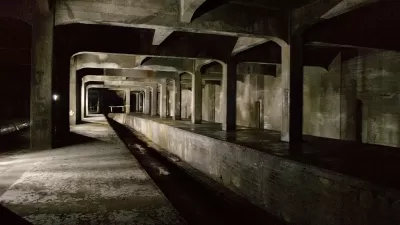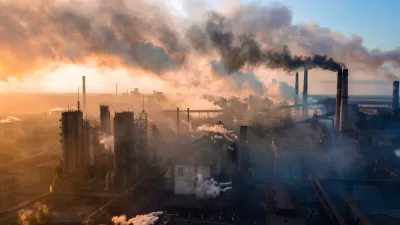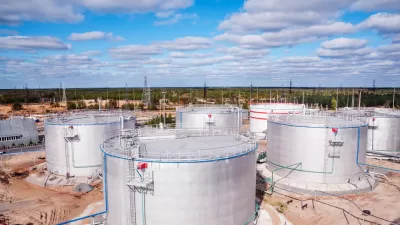The construction of Riyadh's Metro has ambitious goals to relieve gridlock and reduce obesity. Perhaps more importantly, it aims to grant women the freedom of mobility. “That's a lot to expect from a public transport system,” writes Susanne Koelbl.
The City of Riyadh, Saudi Arabia is implementing a strategic master plan to introduce an urgently needed subway system and undo its heavily congested, auto-centric built form. Currently under construction, the new Riyadh Metro will consist of “six metro lines -- both overground and underground – that fan out across the city like a spider's web, covering a total of 176 kilometers (109 miles).”
Walking appears to be non-existent for many Saudis, and the president of the Arriyadh Development Authority says that 50 years of urban planning failures is to blame. “The streets are empty and public squares are deserted. There are more six-lane highways than sidewalks,” says Ibrahim Sultan. “Saudis spend their entire lives moving between the air-conditioned interiors of their homes, their cars and the shopping mall.”
“That's why the new metro is designed not only to improve conditions in the inner city -- but to usher in social change,” reports Koelbl. “It could serve as a first step toward subtle progress in a country dominated by Wahhabism, an ultra-conservative branch of Sunni Islam, where women may not drive, seldom leave their homes alone and must always have full body cover and wear a veil when they do.”
In the new subway, women and children will be able to travel without escorts or controls, and will enter into separate compartments from men. “As anachronistic as that may seem, though, it marks progress nonetheless,” says Sultan.
FULL STORY: Mobility for Women: Riyadh Metro Promises Social Change

Manufactured Crisis: Losing the Nation’s Largest Source of Unsubsidized Affordable Housing
Manufactured housing communities have long been an affordable housing option for millions of people living in the U.S., but that affordability is disappearing rapidly. How did we get here?

Americans May Be Stuck — But Why?
Americans are moving a lot less than they once did, and that is a problem. While Yoni Applebaum, in his highly-publicized article Stuck, gets the reasons badly wrong, it's still important to ask: why are we moving so much less than before?

Using Old Oil and Gas Wells for Green Energy Storage
Penn State researchers have found that repurposing abandoned oil and gas wells for geothermal-assisted compressed-air energy storage can boost efficiency, reduce environmental risks, and support clean energy and job transitions.

San Antonio Remains Affordable as City Grows
The city’s active efforts to keep housing costs down through housing reforms and coordinated efforts among city agencies and developers have kept it one of the most affordable in the nation despite its rapid population growth.

What Forest Service Cuts Mean for Cities
U.S. Forest Service employees work on projects that have impacts far beyond remote, rural wilderness areas.

North Texas Transit Leaders Tout Benefits of TOD for Growing Region
At a summit focused on transit-oriented development, policymakers discussed how North Texas’ expanded light rail system can serve as a tool for economic growth.
Urban Design for Planners 1: Software Tools
This six-course series explores essential urban design concepts using open source software and equips planners with the tools they need to participate fully in the urban design process.
Planning for Universal Design
Learn the tools for implementing Universal Design in planning regulations.
Heyer Gruel & Associates PA
City of Moreno Valley
Institute for Housing and Urban Development Studies (IHS)
City of Grandview
Harvard GSD Executive Education
Salt Lake City
NYU Wagner Graduate School of Public Service
City of Cambridge, Maryland





























